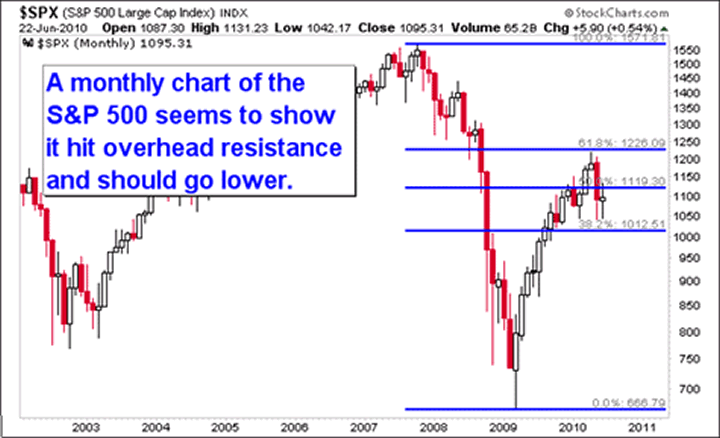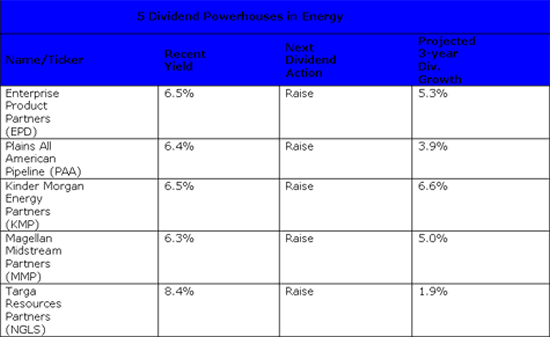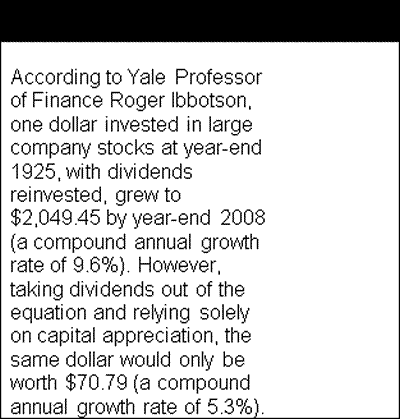Is The Stock Market Scaring You? Here’s What to Do!
Companies / Dividends Jun 25, 2010 - 07:55 AM GMTBy: Sean_Brodrick
 I don’t know about you, but I find this a tough market. Just look at some recent action. On Monday, the S&P 500 pushed above 1,120 to trigger stop-losses of the short-sellers. So, the bulls piled in … only to have the market suddenly collapse under their feet back under 1,120 then 1,100. This move trapped both sides of the market with back-to-back losses.
I don’t know about you, but I find this a tough market. Just look at some recent action. On Monday, the S&P 500 pushed above 1,120 to trigger stop-losses of the short-sellers. So, the bulls piled in … only to have the market suddenly collapse under their feet back under 1,120 then 1,100. This move trapped both sides of the market with back-to-back losses.
So are you bullish … bearish … or confused? I’ll tell you what I think: This behavior, and other incidents like the recent “flash crash,” are not symptoms of a healthy market. They are symptoms of a market in trouble. And you’ll see no better indicator of the kind of trouble the broad market is facing than on this monthly chart of the S&P 500 …

This chart shows Fibonacci retracements, common support and resistance lines used by technical analysts. The market bumped its head on overhead resistance and seems headed lower. Now, it doesn’t have to be a straight line. But you can bet that traders are looking at this chart and weighing it with dismal fundamental news.
What fundamental news? I’m talking about stubbornly high unemployment … weakening retail sales … building permits falling off a cliff … decreasing mortgage applications … Congress putting the brakes on more stimulus … and more. This is the kind of news that will grease the skids for the S&P 500 and broad market to slide lower.
On the plus side, there’s always the potential that we could pull out of this slide sooner rather than later … there’s a light at the end of every tunnel … and I’m bullish on oil and gold due in part to declining supply and in part to problems with fiat currencies. Problems with the euro could boost U.S. stocks, by the way, for the simple reason that if Europeans think the euro is heading lower — as I do — they have all the more reason to buy U.S. assets.
Still, it’s a scary market. Where should you be investing right now? The good news is you can make money in a bear market — especially if you invest in stocks that pay you.
Wall Street Can’t Lie About Dividends
I’m talking about dividend stocks. Dividends provide income in down and flat markets, which can be reinvested and compounded over time.
And here’s the beauty of investing in dividends during a correction: Pullbacks provide the chance to buy stocks and funds that pay dividends at bargain-basement prices.
Also, cash flow generated from a stock is real money in your pocket. To make money on a non-dividend stock, you must correctly identify a time to sell the stock at a higher price. Dividends, on the other hand, will earn you money without you having to sell.
Finally — and this is my favorite part — Wall Street can fudge a lot of things, but it can’t lie about dividends.
Check out some of these dividends paid by some of powerhouses in the energy sector …

Master limited partnerships can have tax consequences, especially if you’re buying them in a non-retirement account. So check with your accountant to see if they’re right for you. But I believe these are just the kind of stocks you should be buying for your retirement. After all, why not buy a stock or fund or partnership that pays you to hold it.
All these MLPs are paying huge dividends and they’re expected to RAISE those dividends at the next payout. And they’re just part of a list of 12 top-paying MLPs I gave my Crisis Profit Hunter subscribers last month.
A broad market correction should push these stocks lower. But what if it’s worse than a correction? Heck, what if it’s worse than a bear market? Crisis Profit Hunter is about preparing for that. And history shows us that dividends provided real, tangible benefits to long-term investors in the Great Depression.
 |
It took more than 25 years (1929-1954) for the Dow Jones Industrial Average to get back to the level reached before the 1929 crash. However, a portfolio packed with dividend-paying stocks did much better.
During the 25-year period that it took stock prices to get back to break-even, an investor who invested $100K and reinvested dividends would have seen his portfolio grow to $431K (a return of 331%).
Here’s a more recent comparison: According to Ned Davis Research, $100 invested in all dividend payers of the S&P 500 index in 1972 would have grown to $2,266 by the end of 2009. The same $100 invested in non-dividend paying stocks in the S&P 500 returned a negative 39% over the same period.
A Big Difference
I don’t know if we’re in the early stages of a Depression. I do know that a lot of fuel for the U.S. market rally off the 2009 lows came from the United States borrowing and spending $1.5 trillion a year, or 11% of GDP, for the last two years!
There’s a word for that kind of borrowing: Unsustainable! The markets may be coming to that conclusion. Along with worries over Europe, that could be one reason why the S&P 500 lost 10% of its value in just a month!
So where do you want to hide out when stocks get hammered? I think the answer hasn’t changed much from the Depression: Dividends!
Some things have changed. In the 1930s, investors demanded dividends, and payout ratios were high relative to today’s standards. The average yield during the 20s and the 30s ranged between 5% and 9%.
During the last secular bull market (1982-2000), dividend yields gradually declined to an all-time low, as valuations increased and investors became more interested in capital gains, to the point that in 2000 the dividend yield on the S&P 500 was barely over 1%. More recently, the S&P 500 sported a dividend yield of 2.6%.
So where can you get those dividends of 5% and higher? In energy and other high-yield natural resource plays, that’s where.
Dividends provide a nice cushion when stocks are going down. That way, you don’t have to pick the bottom. And if and when the market turns up — as they all eventually do, dividend stocks provide price appreciation to go along with the cash flow.
Longer-Term, Energy Prices Will Go Higher
Oil stocks and funds can come under pressure in the short term for multiple reasons …
- Action in the broad market — traders sell their winners to cover their losers.
- The debt crisis rocking Europe. That crisis not only weighs on European oil consumption, it also weighs on China’s growth because China is a huge exporter to Europe.
- Changing oil supply and demand estimates. Just this week, the International Energy Agency said it expected world oil demand growth would slow down as China takes its foot off the accelerator. This news sent oil prices lower. On the other hand, the IEA also said spare production capacity in OPEC is going to start shrinking by 2011. There isn’t much room for error.
In fact, there are plenty of long-term forces that keep falling into place that will move oil higher and higher.
Here’s the latest piece of the puzzle: Khalid al-Falih, the head of Saudi Arabia’s national oil company Saudi Aramco, recently warned in a speech that over the next two decades total Saudi Arabian energy demand is expected to grow an astounding 250% — cutting sharply into oil available for export.
And the fact is, the more Saudi Arabia uses its own oil, the less it has to sell to us.
Other experts say the real situation is even worse! They say that total Saudi crude oil could begin declining as soon as next year, as that country’s giant Ghawar oil field starts to deplete.
Meanwhile, we have Mexico’s Cantarell field depleting very quickly, demand soaring in emerging markets like China and India, and more. All in all, I think oil prices will bottom soon and head higher, and that means the kind of companies I’ve told you about today — energy stocks and MLPs that pay big dividends — are double bargains!
 |
| Oil fields in Saudi Arabia and Mexico are depleting. That’s just one of the reasons energy prices will start soaring once again. |
What You Can Do Right Now …
First, see if any of these MLPs I listed above are right for your portfolio. Big dividend payers like these can cushion your portfolio in the hard times and help it rise faster in the good times.
Second, since the market is acting crazier than a sack of rabid weasels right now, I think you should move away from short-term trading and focus on the long-term, if possible, and the intermediate-term if necessary. Ask yourself what stocks and funds you want to hold for the long term. Are they in your portfolio now? Are you holding some “losers” hoping they’ll come back? Maybe you should put that money to better use elsewhere, because come-back time may be a long way off.
Third, consider joining Crisis Profit Hunter. I have a new issue going out TODAY! We just bagged some nice gains, but I also have a new recommendation — a fund that pays a big, fat dividend.
What’s more, in this issue, I give my Crisis Profit Hunter subscribers the scoop on the environmental and economic fallout from BP’s “well from hell” in the Gulf of Mexico. I also give subscribers the skinny on how not to get scammed by “oil cleanup” stocks that are more likely to clean out your wallet than clean up any oil. Plus, I tell you about three REAL, solid clean-up firms that stand to reap big profits from BP’s big spill.
Finally, I have a special guest-column explaining why “prepping,” or preparing for emergencies and disasters, is a sound financial strategy for “non-extremists.” That’s right — you can prepare for the worst and come out ahead financially. And that’s what Crisis Profit Hunter is all about.
To learn more about Crisis Profit Hunter, click here.
Yours for trading profits,
Sean
P.S. The Crisis Profit Hunter portfolio — packed with precious metals, energy and dividend-paying stocks and funds — is running rings around the S&P 500. I have more recommendations to make — and NOW is a great time to get on board.
This investment news is brought to you by Uncommon Wisdom. Uncommon Wisdom is a free daily investment newsletter from Weiss Research analysts offering the latest investing news and financial insights for the stock market, precious metals, natural resources, Asian and South American markets. From time to time, the authors of Uncommon Wisdom also cover other topics they feel can contribute to making you healthy, wealthy and wise. To view archives or subscribe, visit http://www.uncommonwisdomdaily.com.
© 2005-2022 http://www.MarketOracle.co.uk - The Market Oracle is a FREE Daily Financial Markets Analysis & Forecasting online publication.



